#suffolk coast
Explore tagged Tumblr posts
Text

Orford, Suffolk, England, UK
#orford#suffolk#castle#england#architecture#landscapes#castles#medieval#medieval architecture#norman keep#norman castle#keep#suffolk coast#ipswich#woodbridge#aldeburgh#viewpoint#uk#uk travel#travel#travel photography#europe#great britain#united kingdom#rural#rural life#rural living#countryside#country#norman architecture
21 notes
·
View notes
Text
The City That Fell Off a Cliff

"Beneath the waves, off the Suffolk Coast, lies a city taken by the sea through centuries of erosion. Matthew Green revisits Dunwich, a once lively port transfigured into a symbol of loss, both eerie and profound, for generations of artists, poets, and historians drawn to its ruinous shores." - this is how Matthew Green begins his essay.
I recommend to read:
3 notes
·
View notes
Text

On the Suffolk Coast (1885) by Willard Metcalf
569 notes
·
View notes
Text
"While COVID-19 lockdown will go down in history as a time devoid of in-person gatherings across the globe, in the United Kingdom, one quiet area on the coast of Suffolk became the hot spot for gray seals.
Orford Ness, a spit off of Great Britain that serves as a coastal nature reserve, has become the home of Suffolk’s first breeding colony of grey seals, according to the National Trust.
It is believed that these seals traveled from well-populated colonies in Norfolk and are now the first breeding colony to arrive in Suffolk — likely thanks to its remote location and very limited disturbance from humans.

The first 200 adult seals arrived at Orford Ness in 2021 when visitor access was significantly reduced in an extended period of COVID-19 closures.
As it turns out, simply being left alone was all they needed to thrive.
Just last month, the first gray seal pup of the 2024 season was born, and this winter’s breeding season has already seen 80 pups on the scene, with many more expected. The site is now home to about 400 seals, up from about 200 just three years ago.
“We’re really happy to see new pups being born here at Orford Ness for the fourth consecutive year,” said Glen Pearce, Orford Ness’ property operations manager, in a statement.
“Despite the seals’ arrival in 2021, we held off talking about them until earlier this year because we wanted to give them the best chance of survival. Being able to talk about them this year, in real time, is a great opportunity to share more about the species and to help people understand how their own actions and behaviours can impact them.”
Human disturbance, which can include any human activity in the vicinity of the seals, is one of the biggest threats to the species, as it can cause them to change their natural behavior.
Gray seals are not listed as endangered and are protected under U.K. law, but they certainly face threats — mostly from humankind — including fishing nets, boat strikes, marine debris, pollution, or disturbance from fishermen and tourists.
Globally, the gray seal is also one of the rarest seal species, with about 50% of the world’s population dwelling in British and Irish waters. That makes this baby boom on Orford Ness that much more spectacular.
“We’re really lucky,” Matt Wilson, the trust’s countryside manager for the Suffolk and Essex coast, told the BBC.
“They’ve formed a breakaway group, found this site and moved into the space we’ve got here. It's a real privilege to have them on this site and a responsibility, too, for the team here.”"
-via GoodGoodGood, December 11, 2024
#seals#baby seals#baby animals#ecology#uk#united kingdom#england#europe#good news#hope#marine animals#wild animals#marine life#marine biology
550 notes
·
View notes
Text
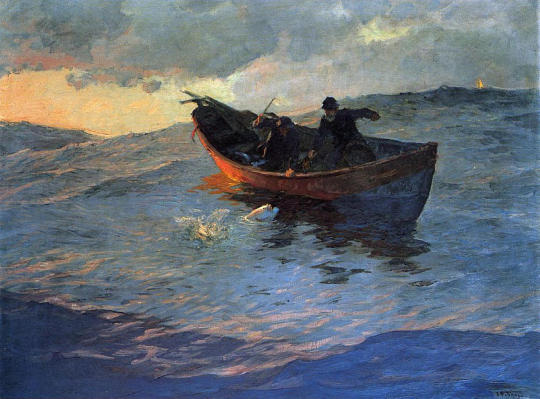
-On the Suffolk Coast-
936 notes
·
View notes
Text
All Saints' Church Falling Into the Sea
A visual progression:
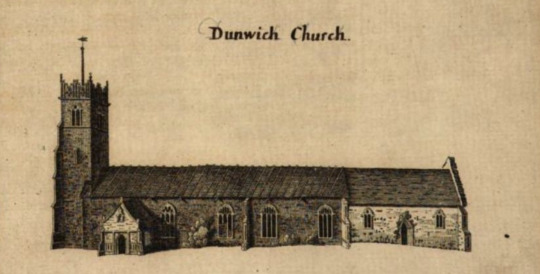
An Historical Account of Dunwich, Thomas Gardner, 1754
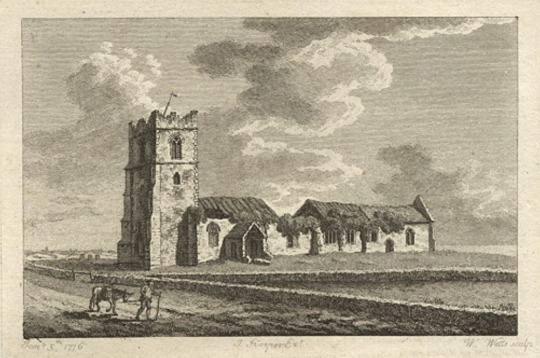
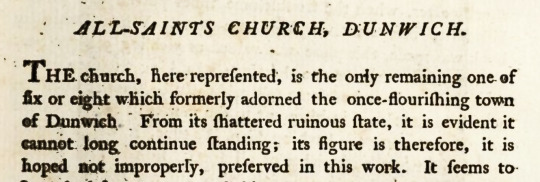
Antiquities of England and Wales, Francis Grose, 1786

A Topographical and Historical Description of the County of Suffolk, John Kirby, 1829
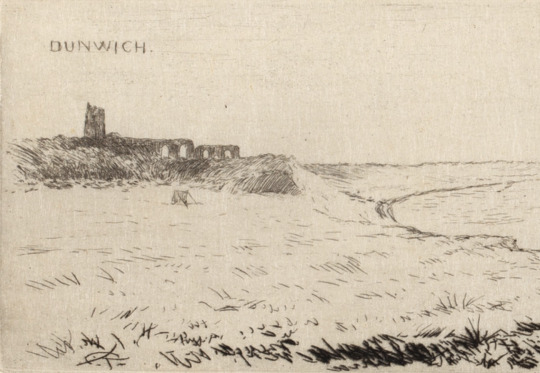
Coast Scene Near Dunwich, Charles Keene, 1855-70
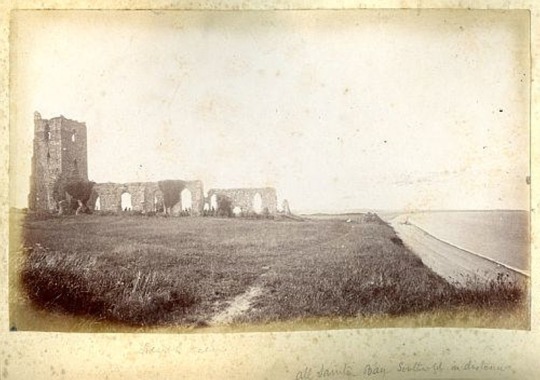
All Saints Church, 1890
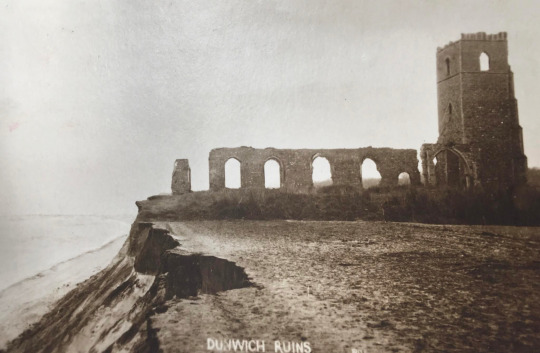
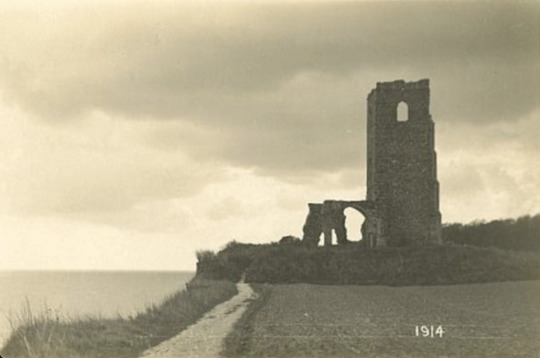
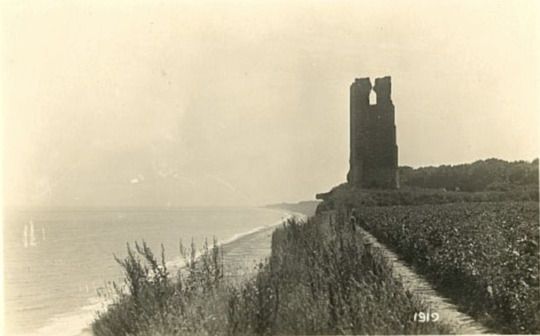
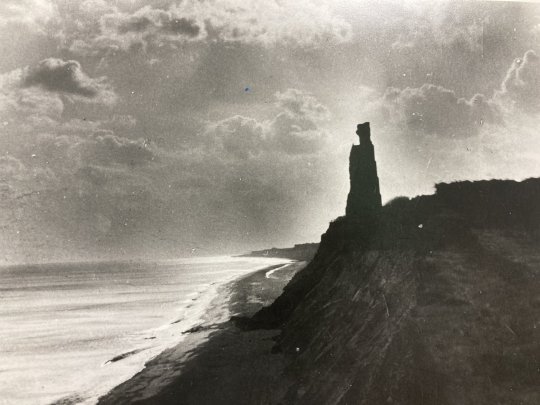
All Saints Church c. 1910, 1914, 1919, 1919-20
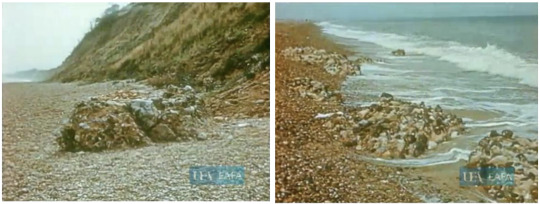
All Saints Church in 1959, 1970 (film sources)
800 notes
·
View notes
Text
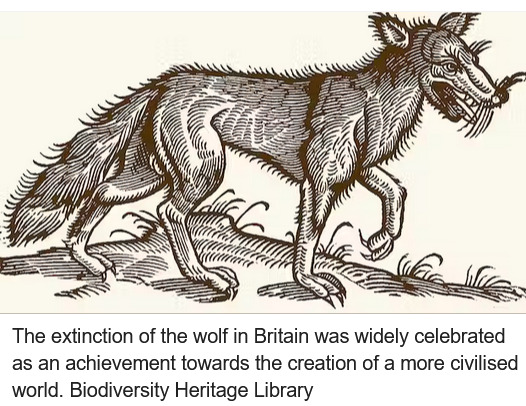


Travel back [...] a few hundred years to before the industrial revolution, and the wildlife of Britain and Ireland looks very different indeed.
Take orcas: while there are now less than ten left in Britain’s only permanent (and non-breeding) resident population, around 250 years ago the English [...] naturalist John Wallis gave this extraordinary account of a mass stranding of orcas on the north Northumberland coast [...]. If this record is reliable, then more orcas were stranded on this beach south of the Farne Islands on one day in 1734 than are probably ever present in British and Irish waters today. [...]
Other careful naturalists from this period observed orcas around the coasts of Cornwall, Norfolk and Suffolk. I have spent the last five years tracking down more than 10,000 records of wildlife recorded between 1529 and 1772 by naturalists, travellers, historians and antiquarians throughout Britain and Ireland, in order to reevaluate the prevalence and habits of more than 150 species [...].
In the early modern period, wolves, beavers and probably some lynxes still survived in regions of Scotland and Ireland. By this point, wolves in particular seem to have become re-imagined as monsters [...].
Elsewhere in Scotland, the now globally extinct great auk could still be found on islands in the Outer Hebrides. Looking a bit like a penguin but most closely related to the razorbill, the great auk’s vulnerability is highlighted by writer Martin Martin while mapping St Kilda in 1697 [...].
[A]nd pine martens and “Scottish” wildcats were also found in England and Wales. Fishers caught burbot and sturgeon in both rivers and at sea, [...] as well as now-scarce fishes such as the angelshark, halibut and common skate. Threatened molluscs like the freshwater pearl mussel and oyster were also far more widespread. [...]
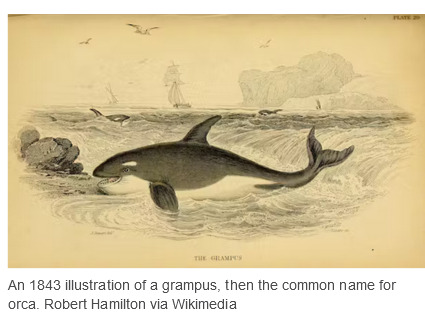
Predators such as wolves that interfered with human happiness were ruthlessly hunted. Authors such as Robert Sibbald, in his natural history of Scotland (1684), are aware and indeed pleased that several species of wolf have gone extinct:
There must be a divine kindness directed towards our homeland, because most of our animals have a use for human life. We also lack those wild and savage ones of other regions. Wolves were common once upon a time, and even bears are spoken of among the Scottish, but time extinguished the genera and they are extirpated from the island.
The wolf was of no use for food and medicine and did no service for humans, so its extinction could be celebrated as an achievement towards the creation of a more civilised world. Around 30 natural history sources written between the 16th and 18th centuries remark on the absence of the wolf from England, Wales and much of Scotland. [...]
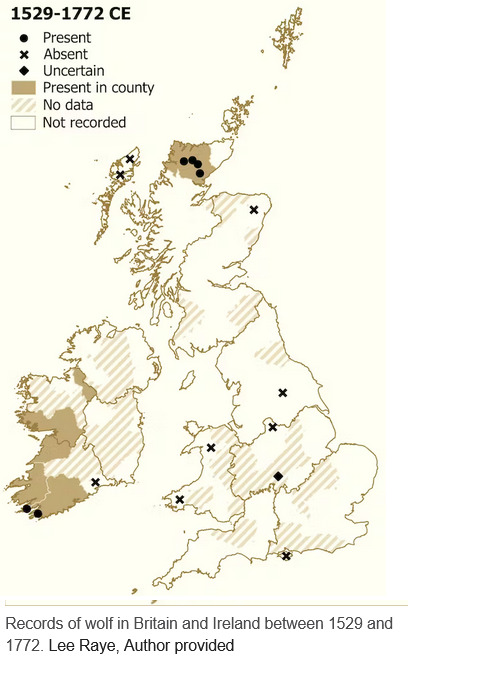
In Pococke’s 1760 Tour of Scotland, he describes being told about a wild species of cat – which seems, incredibly, to be a lynx – still living in the old county of Kirkcudbrightshire in the south-west of Scotland. Much of Pococke’s description of this cat is tied up with its persecution, apparently including an extra cost that the fox-hunter charges for killing lynxes:
They have also a wild cat three times as big as the common cat. [...] It is said they will attack a man who would attempt to take their young one [...]. The country pays about £20 a year to a person who is obliged to come and destroy the foxes when they send to him. [...]
The capercaillie is another example of a species whose decline was correctly recognised by early modern writers. Today, this large turkey-like bird [...] is found only rarely in the north of Scotland, but 250–500 years ago it was recorded in the west of Ireland as well as a swathe of Scotland north of the central belt. [...] Charles Smith, the prolific Dublin-based author who had theorised about the decline of herring on the coast of County Down, also recorded the capercaillie in County Cork in the south of Ireland, but noted: This bird is not found in England and now rarely in Ireland, since our woods have been destroyed. [...] Despite being protected by law in Scotland from 1621 and in Ireland 90 years later, the capercaillie went extinct in both countries in the 18th century [...].
---
Images, captions, and all text above by: Lee Raye. “Wildlife wonders of Britain and Ireland before the industrial revolution – my research reveals all the biodiversity we’ve lost.” The Conversation. 17 July 2023. [Map by Lee Raye. Bold emphasis and some paragraph breaks/contractions added by me. Presented here for commentary, teaching, criticism purposes.]
1K notes
·
View notes
Text

11th Century Silver Coin Hoard Found in UK
A hoard of coins dating back to the 11th century has been found at the site of a future nuclear power station.
Oxford Cotswold Archaeology discovered a cloth package containing 321 silver coins in mint condition during excavations at Sizewell C on the Suffolk coast.
The team believed the bundle of coins could have been the savings pot of a local figure, fearing regime changes following the coronation of Edward the Confessor in 1042.
Archaeologist Andrew Pegg said he was shaking when he found the coins.
"I was shaking when I first unearthed it, seeing a single coin edge peeking at me," he recalled.
"A perfect archaeological time capsule.
"The information we are learning from it is stunning and I'm so proud to have added to the history of my own little part of Suffolk."
Mr Pegg referred to the collection as "the pasty" due to the coins being wrapped in a cloth bundle which was barely bigger than a Cornish pasty.

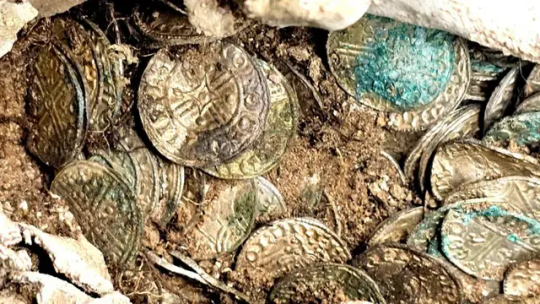
The coins date between 1036 and 1044 during the reigns of Harold I, Harthacnut and Edward the Confessor.
A large number of them were minted in London, but others were struck at locations including Thetford and Norwich in Norfolk, as well as more locally in Ipswich and further away in Lincoln and Stamford in Lincolnshire.
The archaeologists said it represented a substantial amount of money to most people of the time and likely belonged to someone of middle status rather than anyone of very high status or national importance.
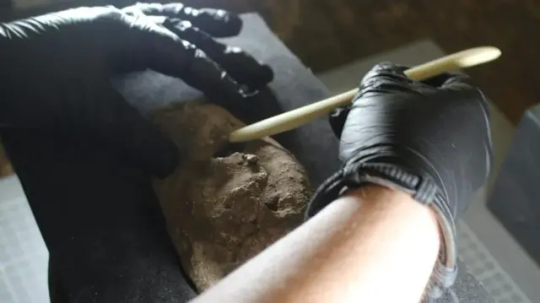


However, they do not know why the collection was never retrieved.
It was likely the owner was prevented from returning to the location, they potentially died before they could return or they were unable to relocate the exact spot they buried the coins in, it was theorised.
Damian Leydon, site delivery director at Sizewell C, said the find was "extraordinary".
"This project provides a rare and fascinating glimpse into Suffolk's rich history, deepening our understanding of this part of Britain," he added.
"In partnership with Oxford Cotswold Archaeology, we plan to make these discoveries as accessible to the public as possible."
By Alice Cunningham.
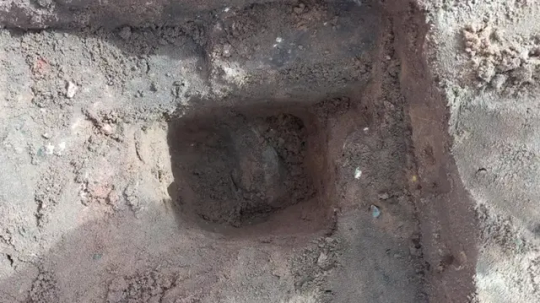
#11th Century Silver Coin Hoard Found in UK#silver#silver soins#collectable coins#ancient coins#ancient artifacts#archeology#archeolgst#history#history news#ancient history#ancient culture#ancient civilizations#medieval#medieval history
31 notes
·
View notes
Photo

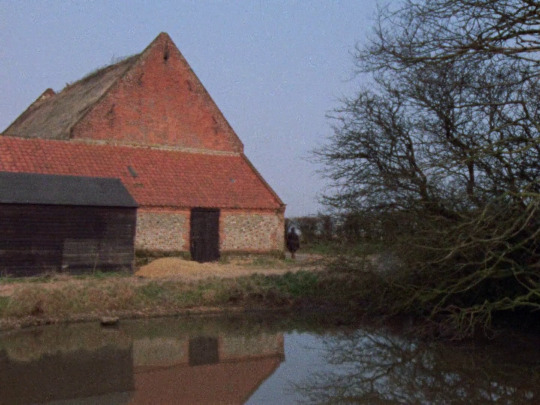
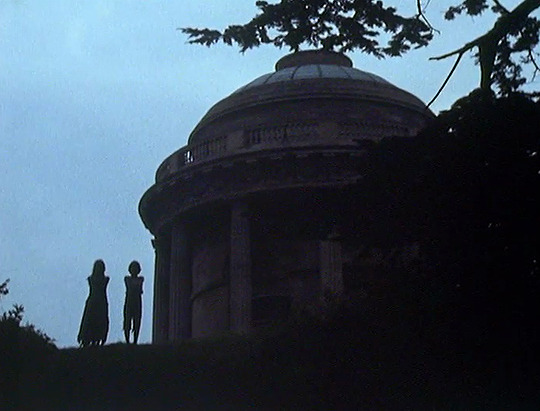

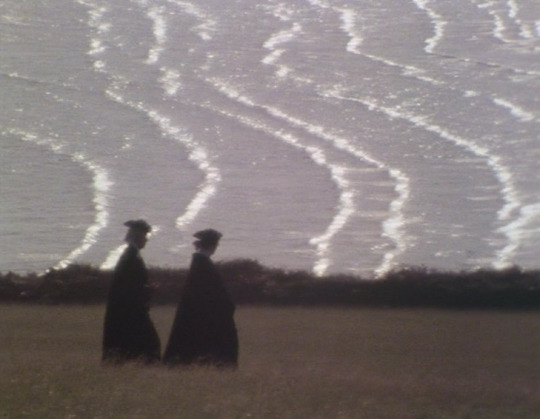
The Stalls of Barchester (Lawrence Gordon Clark, 1971) A Warning to the Curious (Lawrence Gordon Clark, 1972) Lost Hearts (Lawrence Gordon Clark, 1973) The Treasure of Abbot Thomas (Lawrence Gordon Clark, 1974) The Ash Tree (Lawrence Gordon Clark, 1975)
“For all five of these adaptations, Gordon Clark worked with cinematographer John McGlashan and sound recordist Dick Manton, who he credits with establishing the gloomy look that would be the hallmark of the series (as well as editor Roger Waugh who edited all the original series’ James adaptations save 1973’s ‘Lost Hearts’). Central to that aesthetic were the authentic East Anglian locations that have been the inspiration for many a terror tale, even aside from those of M.R. James.
‘James lived in East Anglia—the region that encompasses Norfolk and Suffolk—for most of his life,’ explains Helen Wheatley, citing this as one reason James set many of his stories there. ‘However, there is also a broader sense of the region as being rather out on a limb, a relative hinterland, which lends itself to ghost story telling,’ she continues. ‘In James’ stories, and their television adaptations, the geography and landscape of the region—expanses of flat land, the whispering grasses of the East Anglian coast line, sparsely populated agricultural land—has a particularly haunting quality.’
This landscape is key to the series’ hauntological appeal. Scholar Derek Johnston has an extensive catalogue of writing that examines nostalgia in relation to the Christmas ghost story—and the A Ghost Story for Christmas series in particular—and notes that the Victorian middle class idealization of rural life was subverted by James’ stories, which presented the country as peaceful on the surface but a place of dark, tumultuous secrets. He also points out that East Anglia is a land of invaders and colonizers, writing in his essay ‘Season, Landscape and Identity in the BBC Ghost Story for Christmas’ that ‘The connection to the local soil and landscape runs generations deep, but it has also been built upon the remains of earlier populations, with earlier connections to that landscape, overrun by the incomers...the landscape may encourage identification with the nation, but it also emphasises how the landscape is interpreted through the history of human action upon it.’” — Kier-La Janisse, from Yuletide Terror: Christmas Horror on Film and Television (2017).
#lawrence gordon clark#kier la janisse#yuletide terror: christmas horror on film and television#w*#caps#mr james christmas
173 notes
·
View notes
Audio
"...a celebration of collective rituals. From the ancient customs of Wassailing - carolling around a tree and spreading good cheer to a traditional folk dance, the Irish lamenting song She Moved Through the Fair (One Star Awake), they also bring a taste of their future duo work in MERROWS, a piece recorded inside Jaywick Martello Tower on the Essex coast and an old thatched cottage in Suffolk and inspired by the Irish mer people who could travel between land and sea using a special hat..."
* Listen to/purchase: WINTER RITUALS EP, by Laura Cannell & Kate Ellis
10 notes
·
View notes
Text
For fans of Julian Simpson, here's the latest news on the Pleasant Green Universe (PGU).
Pleasant Green
Hollywood being in the doldrums right now, I have decided to make Pleasant Green my life for at least the next few months. I'm very happy with that decision, because there is a LOT I want to do in this universe and I am finally carving out the time to get some of it done. In the past I have been a little coy about plans because, well, the nature of this business is that everyone is a little secretive about projects but NO MORE. I am showing my work now!
First up, there's going to be a movie of BAD MEMORIES. This has been in the works for a while (truth be told, it's still in the works because these things take AGES to come together) but I can tell you that the script is written (and re-written, and re-written) and the action has moved to the US. This is partly for commercial reasons and partly because it lets me set the story in Arkham-country, which is really exciting to me. The story is an adaptation of the original radio play, not a straight translation, but the whole thing is going to be creepy as hell. We have actors attached to play Rachel and Jim, but that's the one thing I do have to be coy about for contractual reasons. I can tell you that I LOVE these two actors and they are going to be incredible.
Then there are THREE (count 'em!) movies coming up behind that (quite a bit behind because I'm only writing them now). THE SHADOW WORLD is a supernatural espionage story that is going to be crazy-dark. It tells the story of Marcus Byron and Victoria Ness, who both featured in The Haunter of the Dark, and explores the weird liminal space that we call "The Breach". Behind that are two interlinking movies, one big, one smaller, that are going to be set in Paris and revolve around the activities of the Levesque Institute. I'm super-excited about all three of these, but it's going to be a long old journey from here to when we start selling tickets.
On the TV side, there is a show tentatively titled WENTWORTH, which I'm incubating right now. It's set on the Suffolk coast (of course it is) and it's going to be intersecting with the Pleasant Green Universe from a different angle, as a London cop (it's British TV, the main character has to be a cop, that's the law) heads back to her home village to investigate the death of a schoolteacher, which leads her down a trail into her own, very dark, family history. I want to do this show on a new model; 30 minute episodes, low-budget (like an indie movie) and financed independently so we get the freedom to make it right. I imagine that's going to take a while to come together, but it'll be worth it if we can make it work, and I want to sprinkle a few familiar characters into it too.
More immediately, the latest installment of the Saltmarsh storyline will be going up on the Pleasant Green site, for paid subscribers, in the next few days. This story is getting weirder and scarier from here on in.
We have to sit down and figure out the crowdfunding stuff over the next month or so, but the plan right now involves two audio series and I'm not sure what order we're going to fund them in. Obviously one is the fifth season of The Lovecraft Investigations. That's expensive, relatively speaking, because I want to do a full series of 30 minute episodes and really dive back into the world properly. You all have an idea of what story I'm adapting for this, but you have NO IDEA where we're going to take this one...
The other audio series is more modest, but I think it's going to be really good. Throughout the Lovecraft Investigations, we have continually made reference to the Great Beast himself, Aleister Crowley, and it occurred to me that there is more than enough material there to create a non-fiction audio series detailing Crowley's life and very weird exploits; birth to death, soup to nuts, the whole thing. We'd make it entirely factual BUT we would present that information within our own framework ie. Kennedy and Heawood would host the show, with the occasional guest interviewee (a certain professor of folklore, for instance) for added colour. I'm really excited about this idea, as a kind of Lovecraft Investigations 4.5, but the format lends itself to a whole strand of occult non-fiction ideas as well.
Knocking around on the periphery of all this is THE VERY RUINE OF THE WHOLE LAND, which is a feature-length audio piece telling the origin story of a character called Karen Whybrew, who no one but me has met yet (readers of the Saltmarsh storyline will be encountering her very soon). The idea here is to do something absolutely spectacular with sound, like a weird, spooky art movie on headphones - something that will really push the boundaries of the medium.
Meanwhile, I'm working to set up the premium "Department of Works" membership tier on the Pleasant Green site (Ghost does not make it easy to do this stuff in the background without publishing everything, but I'm getting there). I had wanted to offer high-quality audio downloads of the shows to that membership level, but we have a boring issue with distribution rights at the moment, so that may take a while. In the meantime, I am delving through behind-the-scenes photos and notebooks etc to put together a really good package for The Case of Charles Dexter Ward. When I've got that together, I'll launch the tier and then start assembling and posting material for the other seasons, one by one. I'm also going to include downloadable PDFs of all the series scripts. We're also talking about putting a few bits and pieces of merch together.
The future of the Pleasant Green site is looking pretty good at the moment. The Saltmarsh storyline is leading into some other fiction ideas, and a recent trip to Amsterdam yielded an interesting notion about an organisation known only as The Cabal, which Parker is investigating and which intersects with the aforementioned Karen Whybrew storyline.
AND ANOTHER THING, which I may have alluded to before; dust off your D20s because I'm going to be working with Pelgrane Press to create a Pleasant Green supplement for their stupendous Trail of Cthulhu game system. That's in the early stages (because I have been slow getting off my ass and providing material) but it is now happening just as fast as we can manage it.
Like I say; full immersion in the Pleasant Green Universe for the next few months. I can't wait.
As we move forward on all these fronts, there will be plenty of opportunity to help out and get involved. Cartoon Gravity will be the place to learn about it all first, so if you know people who like the world, make sure they know to sign up here (it's free). Our best chance of getting a head of steam is to bump up the subscription numbers on this site, so we can launch membership and crowd-funding initiatives in a big way. The more people you can hook in now, the more we can get done.
Oh, I almost forgot - ALDRICH KEMP AND THE ROSE OF PAMIR starts on Radio 4/BBC Sounds on Friday 22nd November. This is our best series so far. I'll post the trailer just as soon as it's available.

6 notes
·
View notes
Text




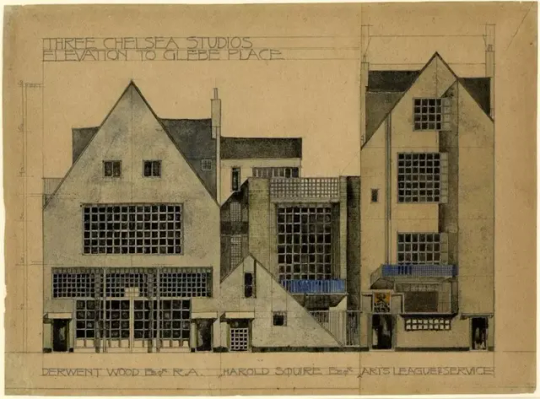


On 7th June 1868 Charles Rennie Mackintosh was born n Glasgow.
As a young boy he was inspired by nature, drawing and painting flowers and driftwood he'd collected in the basement of his home in Townhead He began attending classes in drawing, painting, modelling and design at the Glasgow School of Art (then on Sauchiehall St) aged 15 and a year later began working as an apprentice to local architect John Hutchison.
It is widely reported that Mackintosh’s name is actually spelt 'McIntosh' on his birth certificate but was misspelt in the 1890s. The error stuck and from then on the young man referred to himself by the surname we are all familiar with.
Many buildings in Glasgow built in the 1890s were described publicly as the work of architects John Honeyman and Keppie; buildings which were either partly, or entirely like the Glasgow Herald building (now the Lighthouse) the work of Mackintosh in his role as assistant within the firm. As he was not a 'partner', he wasn't publicly acknowledged.
Mackintosh was engaged to Jessie Keppie, the youngest sister of the boss of his firm, but called off the engagement after falling in love with fellow artist Margaret MacDonald. Doing so was highly frowned upon at the time, and he risked both his expulsion from the firm and from the Glasgow societal circles he moved in for his choosing to pursue his love, whom he would marry in 1900.
His love for Margaret MacDonald is one of the greatest love stories in art history, and Mackintosh wasn't shy of shouting it across the rooftops. His wife was his "spirit key" who represented 3/4 of all that he had done. And while he had talent, Margaret "had the genius".
After the Glasgow School of Art was completed in December 1909, a local paper branded it an eyesore for the centre of the city, remarking that Mackintosh "have his bare arse whipped" for designing a building that "resembles a prison". Newer generations of citizens even regarded the building as 'queer' and 'decadent'. Remarkable for a building recognised by RIBA journal in 2009 as the finest designed by a British architect in the last 175 years.
Charles Rennie Mackintosh was reported to be a heavy drinker, with stories indicating that he was often found in the morning in his studio under the table clutching an empty bottle.
As if his design for buildings wasn't giving him enough stick from some of his peers, Mackintosh even went so far as to design his own tartan, rejecting traditional green and red colours with his own 'Toshie's Tartan' of black and white check.
During WW1 in August 1915, Mackintosh was locked up in jail after begin arrested on suspicion of being a German spy. This was after he had aroused the suspicion of locals while staying in Suffolk by his late night walks along the coast, who thought that his use of a lantern may be him signalling out to see to the enemy.A police raid found letters written in German (to fellow artists) and he was banged up, before begin released after colleagues convinced the authorities of his innocence.
Mackintosh's work has featured in a dazzling array of films such as Inception, The Addams Family, American Psycho and Blade Runner - where the inclusion of his famous 'Argyle' chair provides a hidden meaning to the life of one of the film's central characters. Not only that, but in Madonna's 'Express Yourself' video, the singer can be seen crawling underneath a table surrounded by Mackintosh's famous chairs.
The statue in the pics is at Anderston in Glasgow, and was unveiled on anniversary of his death in December 2018, it is by Scottish sculptor Andy Scott of Kelpies fame.
19 notes
·
View notes
Text
Our Routes

Here at Network Rail, we are responsible for the railway infrastructure in Britain. However, Britain is a big* country, so you might be wondering how exactly we keep track of everything (eh? eh? that was a railway pun, LAUGH) and today we'll tell you about our routes and regions, along with some of what you can expect to find in them.
If you're wondering why that map up there has different colors, it's because everything is split into several larger regions: Eastern (orange), North West and Central (green), Scotland (light blue), Southern (greenish blue), and Wales and Western (pinkish red). (those colors are not the easiest to name). The regions all radiate out from London, because London is the most important part of the country, and the rail network was built to reflect this.
Anyway, here's all of the routes and a little bit about each one!
Anglia route: this region covers some of London (the northeast bit), along with places like Norfolk and Suffolk (the folks, if you will). There's probably stuff there. We aren't really doing any big projects here though.
East Coast route: this isn't a big area, instead it's just the East Coast Main Line (ECML). It's very important, it's how you go from London to Scotland along the right side of the country. It also visits some other places, such as the National Railway Museum. Not really doing anything big here either, there isn't a whole lot of upgrades we can do besides high-speed rail and we all know how that's going.
East Midlands route: the eastern part of the middle of the country, fairly obviously; this route goes to places like Leicester, Derby, Loughborough, and other towns that shouldn't be spelled the way they are. We're electrifying this right now, although how much we'll get done before the government cancels it is anyone's guess. Oh, and we'll be connecting Oxford and Cambridge with a new line going between them, because apparently people want to travel between them (why? it's not like you'd be attending both universities or anything)
North & East route: this covers Yorkshire and some other counties, but the people in Yorkshire are the only ones who care about counties anyway so the others don't need a mention. Here, we're upgrading the Transpennine route (which means electrifying at least some of it) and reopening lines in Northumberland.
Central route: not to be confused with London's Central Line, or with the West Coast Main Line (which is not in this region), this region covers the Chiltern Main Line and some of Birmingham. Despite the Chiltern Main Line not being electrified, we aren't planning to upgrade it any time soon. Also, what's left of HS2 is under construction here.
North West route: these names are kind of boring aren't they? Anyway, this bit has Manchester and Liverpool. The other end of the Transpennine route is here, which is being upgraded. We already told you that though.
West Coast South route: this region, which resembles an american electoral district, is named for the West Coast Main Line, in case you were wondering why it doesn't have any coast on it. This is the other route from London to Scotland, or at least the southern part of it, and we consider it as a region rather than as a seperate line (like the ECML) because we're superstitious and didn't want to have 13 regions. Our main projects here include HS2, and trying to fix London Euston. Maybe. If we feel like it. You don't mind being compressed into a cube, right?
Scotland route: this region is Scotland. Obviously. We didn't need to tell you that. Anyway, there's a lot of electrification going on there, and generally things are being improved, so we here at Network Rail oppose Scottish independence and instead we welcome our new Scottish overlords, who clearly should be running the country instead.
Kent route: these routes aren't numbered counterclockwise around London, that would make too much sense. So we're here instead, in the south east bit of the country. It's the closest bit to France as well. Some upgrades are happening, but nothing too big, and most stuff is already electrified (with third rail).
Network Rail High Speed: this is HS1, the high-speed route from London to Paris (although the French run the bit that's in France). This is where you go if you want a truly fast train, although if you aren't going to France your options are a bit more limited. We don't really see that many people going from London to Ashford, although if they're taking the train that's always a good thing. Oh, and Southeastern don't want you to know this, but their high-speed services are only high-speed when they're on HS1, otherwise they're not actually any faster than normal trains on those routes.
Sussex route: Contains the Brighton Main Line, and also Gatwick Airport is there too. Very busy, uses third rail, we're upgrading some stations, not much else to say about it. Oh, and it has a bunch of south London's trains in it too, which is really the most important bit of the route.
Wessex route: the South West Main Line, and a bunch more of London's rail network. It goes to places other than London as well, such as Portsmouth and Southampton, and includes the Isle of Wight, despite that line being entirely isolated from the rest of the network. Really, the Isle of Wight should be its own region. Anyway, more line & station upgrades, etcetera, but this region also has level crossings for third-rail lines (it isn't the only one though) which are very safe.
Wales & Borders route: covers Wales and the bits next to it, because unlike Scotland, Wales doesn't get a whole region to itself. They're doing some sort of rail improvements in Cardiff, although that might not be our responsibility. We should check at some point, we don't want to have been sitting around thinking Transport for Wales was doing all the work while they were thinking we were doing all of the work, and meanwhile nothing gets done.
Western route: goes to Cornwall and whatnot, along the Great Western Main Line. Most of this isn't electrified, partly because the government cut a bunch of that project back in the day (no, HS2 was not the first time), and because Brunel didn't think electrification was important. That it had not yet been invented is not relevant, if he was such a good engineer than he should have invented it himself.
Anyway, that's how we organize Britain's railways by region. Some lines are important enough to get their own regions, and one line gets an area rather than a line, but only for part of that line (the WMCL).
Oh, and we aren't responsible for the railroads in Northern Ireland, so we don't know what's going on over there. Have they reunified? Do Iarnród Éireann operate their railroads or is it someone else? We've got no idea, but we're pretty sure it's not our job so we don't need to check.
*Britain is not a big country, it's just that there's a lot of railroads here so it makes sense to organize them geographically somehow
#network rail#network rail essays#I have no idea why the names are so inconsistent; just name them after the mainlines or something#and why is it numbered the way it is. just do clockwise outwards from london or something it's not that hard
3 notes
·
View notes
Text

On the Suffolk Coast (1885) by Willard Metcalf
95 notes
·
View notes
Text
The body of a woman was caught in the nets of a fishing boat off the coast of Massachusetts last week, and officials now believe she was buried at sea.
The fishing vessel caught the wrapped body with its nets about 40 miles off the coast on Thursday night, the Suffolk County District Attorney’s Office said Tuesday in a statement to NBC News.
The crew returned to the Boston Fish Pier on Friday morning and was met by the U.S. Coast Guard and Massachusetts State Police, who took custody of the remains, The Boston Globe reported.
The chief medical examiner found that the woman was in the 60-year-old age range and had "numerous cancerous tumors," according to the district attorney's office.
The body had been embalmed and there are no indications of foul play, which “appeared consistent with a burial at sea,” the office said.
Officials did not share any details on the circumstances of the woman's apparent burial.
"We consider this matter non-suspicious and closed," the district attorney's office said.
The woman is unlikely to be identified, a spokesperson for the office said.
3 notes
·
View notes
Text

-On the Suffolk Coast-
79 notes
·
View notes